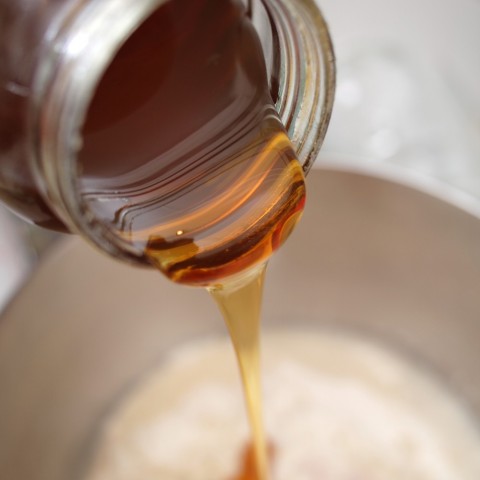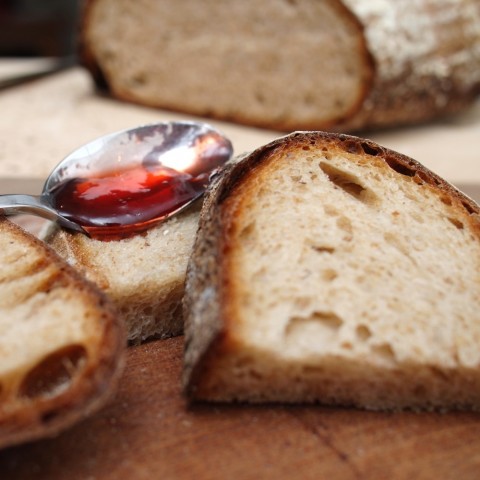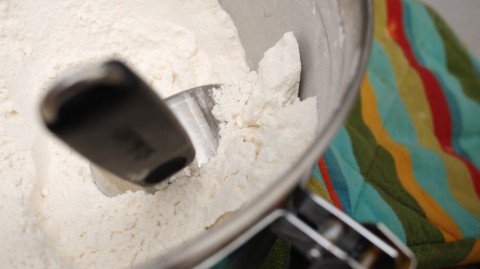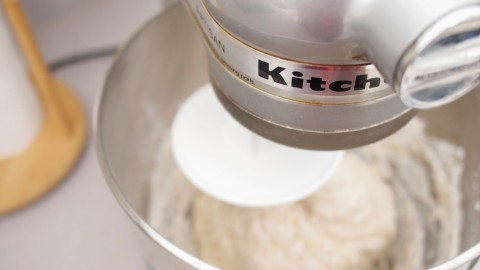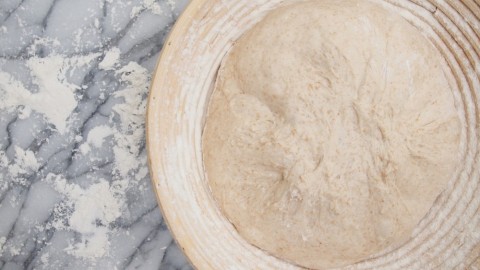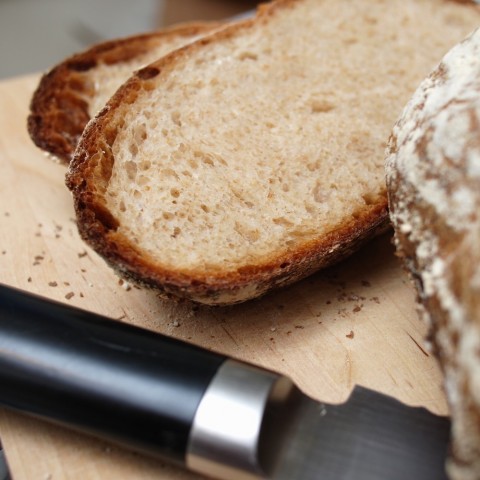Fresh baked bread: hot, straight from the oven, crust crackling as it cools on its wire rack in the chill air of winter. You wait, mouth watering. And then — like some Maenad with a sacrificial goat — you tear it apart with your bare hands and share it out, letting its steaming insides warm you all over.
Romantic? Yes. Gruesome? A bit. Rife with all manner of problems? Most definitely.
The thing is this: winter bread is trouble. If your house is like mine, and if your kitchen stays anywhere south of 70F during the colder months, your yeast is going to be slow and pouty and recalcitrant. Yeasts — capricious microbes that they are — are not at their happiest in sweater weather. And while on a warm spring afternoon, they may rise a bread predictably and efficiently, on a cold winter morning — well — you may be in for a wait.
So — again, if you’re like me and if your house trends toward frosty — there has to be some kind of artificial heat source. Last week, while my dough was rising, I made custard. This week, it was seasoning the cast iron pans. In both cases, the idea was to have the oven on and the bread dough oven-adjacent, in some small hope that the yeast would warm up enough to do its gassy, belching thing.
It worked. But in the process, I managed to warm the house such that by the time the bread was ready, I didn’t need its steamy guts to chase away the chill. In fact, a tall glass of iced coffee was in order.
Which brings me to thing number two: if winter bread is a bundle of trouble, bread that hasn’t been allowed to cool adequately is even worse.
Somehow, somewhere along the line, we developed this idea that bread is best eaten straight from the oven, fresh as it can be. We glommed onto this idea that when it’s hot, bread is at its sweetest, with the tenderest crumb and the crunchiest crust. Perhaps — and this is just a guess — cartoon advertisements of steaming hot loaves are to blame. But no matter the culprit, let me please, please disabuse you all of that notion right now.
When bread comes out of the oven, it’s not done. It’s still cooking. In the intense heat of the oven, baking bread gets to about boiling in its center. Its gluten gelatinizes, and in the process, the texture of the crumb is formed.
The problem with cutting into it too soon is that the gluten hasn’t set back up yet. If you look carefully at a bread with a nice open crumb — a ciabatta, for example — you’ll see that its insides have a kind of shiny, almost plastic latticework to them. It’s like that because the gluten has gone gloopy, and then resolidified. Eating your bread right out of the oven doesn’t give that process a chance to occur. And so really, what you get is a doughy mush, surrounded by some crust.
It can be fun — maybe — but it’s not half so delicious as it will be when it cools.
So here’s what I think: if you’re going to have a romance with fresh bread — and folks, you know I do! — piping-hot-on-a-winters-day isn’t the right image to imbue with aura. Instead, consider the continuity that bread offers between our present and our past. Consider that bread is as old as human civilization — it is the stuff of ancient Greece, Egypt, Sumer.
Consider that by making bread, and by eating it, you are participating in one of our first acts of technology — a means of turning inedible grasses into nutritional food, and a means by which we have been able to break away from mere hand-to-mouth subsistence. Consider that some of our earliest cities were built around community ovens.
And while you’re considering, go take a nap. Or eat a bowl of soup, or have a jog around the neighborhood. While you are considering, stay away from that freshly baked loaf. Because if you can keep your grubby hands off of it for just a couple of hours — you’ll be much happier with the result.
380 g Unbleached AP White Flour
100 g Whole Wheat Flour
20 g Vital Wheat Gluten (if you don’t have this, replacing the AP flour with 400 grams of bread flour would be a good alternative.)
360 ml Filtered Water
3 tbsp Wildflower Honey
1 1/2 tsp Sea Salt
1/2 tsp Yeast
Wheat Bran
Vegetable Oil
The Night Before: Combine all of the whole wheat flour, 50g of the AP white flour, 300ml of water, and the yeast in the workbowl of your stand mixer (or in a medium bowl, if you plan to mix the dough by hand). Mix thoroughly, cover, and leave on the counter overnight.
The Day Of: Add the remainder of the ingredients (minus the bran and the vegetable oil), and mix on low with the kneading hook of your stand mixer (or with a wooden spoon) until it comes together into a dough. Turn the speed up to low medium — I use “4” on my KitchenAid — and knead for 10-15 minutes (20-25 minutes, if you’re doing it by hand) until the dough changes texture and becomes smooth and glossy. Be aware that this is a high-hydration dough. It will remain sticky, even when it is ready for the next step.
Once the dough is kneaded, form it into a ball, deposit it into an oiled bowl, and cover it. After twenty minutes, stretch and fold the dough (pull it from one end, and fold it over itself, then repeat thrice more, going clockwise around the dough ball). This will help give the dough integrity. Cover again, and allow the dough to rise for about three hours — or until it has more than doubled in size.
At the end of that time, prepare your oven for bread baking (insert a baking stone, inverted jellyroll pan, cast iron pizza pan
, or what have you) and preheat to 510F. Move the dough from its bowl onto a floured work surface. Gently form it into a ball, doing your best to create as much surface tension as you can. Then, either place it seam-side up on a parchment-lined counter, or place it into a floured brotform
. Cover the loaf with a moist tea towel, and allow it to proof for an hour and ten minutes.
When the loaf has proofed, turn it onto a pizza peel that has been lined with parchment and sprinkled with wheat bran. Use a serrated knife (or bread lame) to slash the loaf, then insert it into the oven. for the first three minutes of baking, spray the walls of the oven, at thirty-second intervals, with water. After that, turn the oven down to 450F, and bake for about 40 minutes.
When the bread is done, remove it to a wire rack and allow it to cool completely before slicing. Hot bread has may have a tinge of romance, but we know what’s really good.
(You can, of course, find many more fabulous bread recipes through Wild Yeast’s YeastSpotting Archive!)
